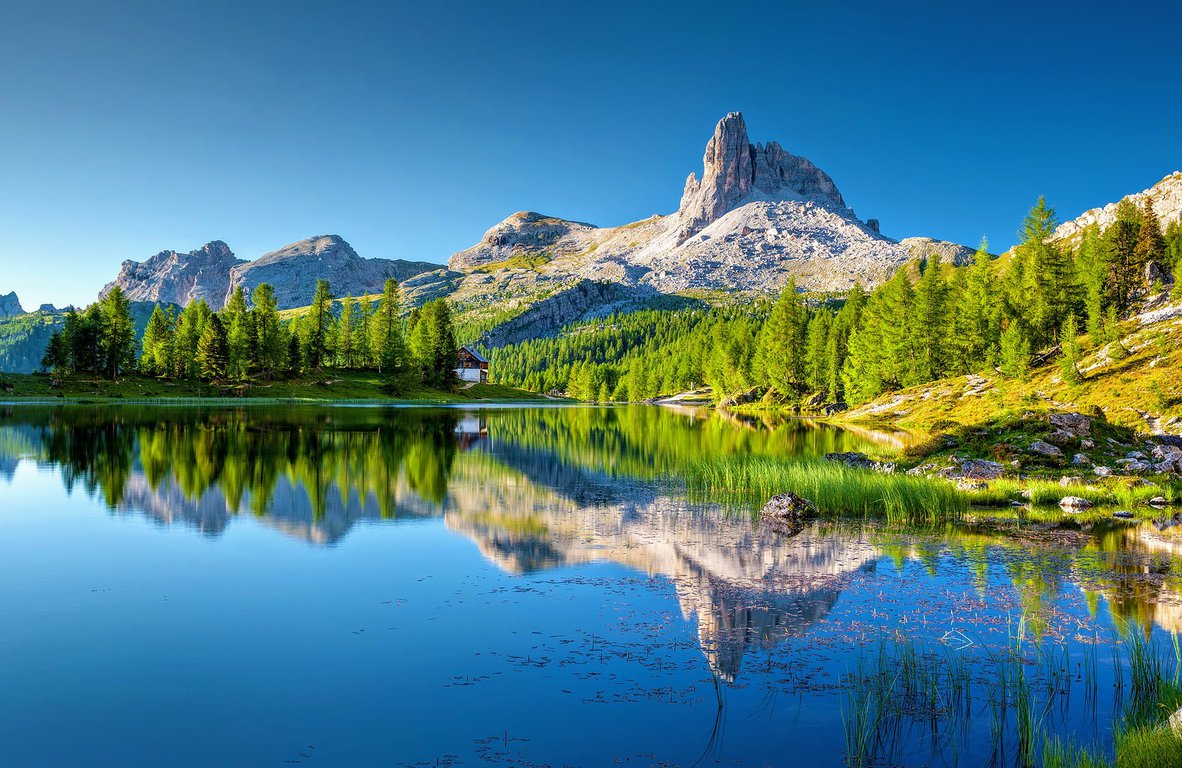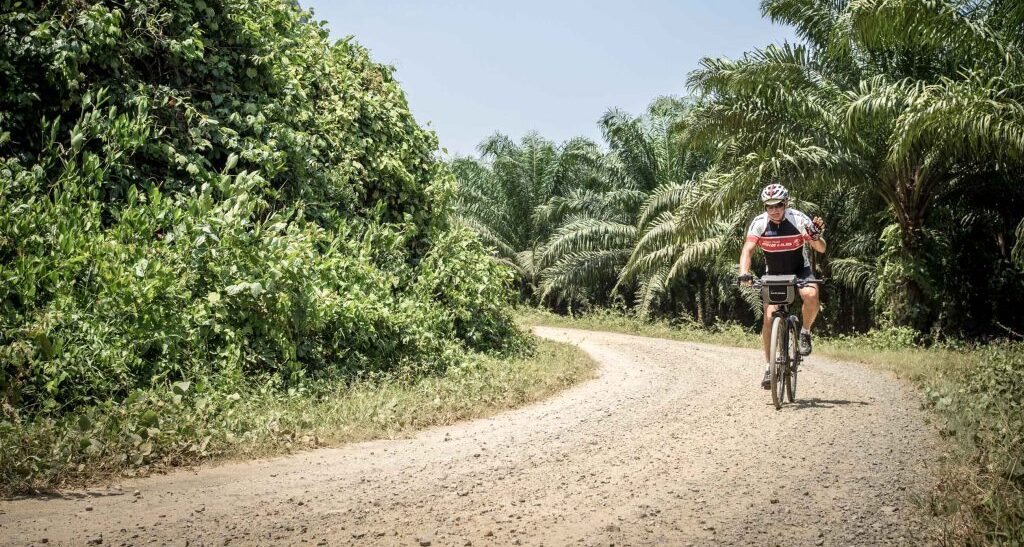Europe’s Best Walking Trails: We’ve asked you before how many epic trails around the world do you know. Walking brings many benefits to reconnecting with nature, challenging yourself, spending time outside with your loved ones, and exploring places that are not easily accessible. That’s why we want to bring you this list of the best walking routes (and a cycle path) in the UK and Europe to present you with some options closer to home.
Most of the European hiking trails below can be started as a self-guided walking (or cycling) tour: perfect for travelers who want a lot without compromising on the safety and organization of a guided tour. More freedom, flexibility, and a sense of accomplishment are after. For those who prefer a guided option, we have indicated the possibilities per trial for this.
GR20 in Corsica
Length: 200 km / 124 miles across Corsica from north to south

Europe’s Best Walking Trails
What Makes It Special: This route in Corsica is considered to be the most challenging long-distance walking route in Europe. It runs almost the entire length of the French island from north to south, exploring its dramatic landscapes, historical sites, and rich cultural heritage.
Guided or self-guided, our Corsican adventures are designed to take you deep into the heart of this extraordinary destination, with options for walking or cycling on various sections of the GR20 and beyond.
Rota Vicentina
Length: 125 or 230 km / 77 or 142 miles along the coast in southwest Portugal

Europe’s Best Walking Trails
What makes it special: Opened in 2013, Rota Vicentina, a long-distance footpath across the Algarve and Alentejo, represents a successful eco-tourism initiative to develop low-impact tourism in a relatively untouched region of Portugal Is. Encounter traditional whitewashed fishing villages and spectacular seaside views. The trail connects the most southwestern point of Cape St. Vincent, Portugal, with the village of Odysseaux, where it splits into two trails; The Historic Route that heads inland and the Fisherman’s Route that follows the coast of Porto Covo. Watch a video now.
Wicklow Way
Length: 131 km / 81 miles across the Wicklow Mountains in Ireland

Europe’s Best Walking Trails
What Makes It Special: One of Ireland’s most popular walking routes, the Wicklow Way is a great track to explore the Irish countryside, experience local hospitality, and admire the emerald green landscape. It is the oldest route in Ireland and 40 years ago a famous hill walker: J.B. It was led by Malone. The long-distance route offers some of Ireland’s best views, including Powerscourt Waterfall, Lugla, Loch Dane, Glenmalure, and Historic Glendalough.
Camino de Santiago: Le Puy to Santiago de Compostela
Length: the French part of the pilgrimage comprises 461 km / 286miles and the Spanish section to the tomb of St James adds another 481 km / 298 miles

Europe’s Best Walking Trails
What Makes It Special: The tomb of the Apostle St. James was discovered in Compostela in the 9th century. The site became the center of a pilgrim route beginning in France and crossing northern Spain to Santiago de Compostela. Since then, walkers have accomplished the feat that comes along the way with a true sense of camaraderie. While there are many different routes to Santiago de Compostela, the most famous Camino de Santiago Walks are in Spain and France.
did you know? Both 2021 and 2022 have been declared by the Pope as holy years, usually when St James’s Day falls on a Sunday, July 25. Appreciating lots of festivities, it’s an extra special time to end your Camino pilgrimage during the weeks surrounding St. James.
Wainwright’s Coast to Coast
Length: 309 km / 192 miles across England from the Irish Sea to the North Sea

Europe’s Best Walking Trails
What Makes It Special: One of Britain’s classic walking routes, Coast to Coast was originated and was described by Alfred Wainwright, author of a renowned series of mountain-walking guide books on the English Lake District. Walk this trail to the accomplishment of crossing England from the Irish Sea to the North Sea under your own steam. Along the way, explore the stunning three national parks of the Lake District, the Pennines, and the North York Moors.
Tour du Mont Blanc
Length: circling the Mont Blanc massif in roughly 170 km / 105 miles

Europe’s Best Walking Trails
What Makes It Special: Sitting on the Italian and French border is the highest mountain in Western Europe – Mont Blanc. At 4810m, the scale of Mont Blanc and other 4000m+ peaks in this region of the European Alps is certainly impressive. The Mont Blanc Massif was first climbed in 1786, and the climb gave rise to modern mountaineering. Not only is it an area for climbers, but walking in Mont Blanc has become so popular that the area is now the third most visited natural site in the world. Anyone traveling here will soon see why.
Undoubtedly the most famous Mont Blanc trek is the classic and complete circumnavigation: the Tour du Mont Blanc, although families and walkers of various abilities can choose a trail to suit their fitness level. Summer is traditionally the most popular time to visit even in spring or autumn for the cool trails and maybe some snow on the route!
Via Dinarica
Length: 1260 km / 783 miles for the entire length of the main route from Slovenia to Albania

Europe’s Best Walking Trails
What Makes It Special: The Via Dinarica is a long-distance mountain hiking trail whose main route (the White Trail) spans the Balkan countries of Slovenia, Croatia, Bosnia, and Herzegovina, Montenegro, and Albania. This European walking route follows the main ridge of the Dinaric Alps, a spectacular landscape woven of ancient forests and cozy mountain villages. Along the way, collect mesmerizing natural sites like the heart-shaped Tranovaco Glacial Lake; turquoise waters of the Rakitnica Valley; and rocky panoramas of Magalik, Bosnia’s highest peak.
Haute Route
Length: 180 km / 111 miles from the Chamonix valley, home of Mont Blanc, to Zermatt, home of the Matterhorn

Europe’s Best Walking Trails
What makes it special: The Walker Haute Route (High-Level Route) connects the valley of Chamonix in France with Zermatt in Switzerland. You trek through some very dramatic alpine scenery, experience traditional European mountain culture, and find yourself among the highest peaks in Western Europe, including the Matterhorn, Mont Blanc, and Dent Blanche. The hiking trail is steeped in mountaineering legend, first taken by British climbers in the late 19th century.
Although the Haute Route is popular, it is bumpy at times and you will find that compared to many other areas of Switzerland, most of the trails are short, giving rise to an excellent variety of alpine flowers and a variety of alpine animals. times are seen.
West Highland Way
Length: 155 km / 96 miles across the Scottish Highlands

Europe’s Best Walking Trails
What Makes It Special: Embark on a hike on the West Highland Way and you step back into history – most of the steps follow the famous dredging and military roads that connect the Scottish Highlands to the lowlands. Many of the hotels you find today are derived from drawing inns operated for centuries. On this official UK long-distance trail, you will also walk to the foothills of Ben Nevis and walk along the shores of the UK’s largest lake, Loch Lomond.
Rhone Cycle Path
Length: 1250 km / 776 miles along the course of the river Rhone from Switzerland to France

Europe’s Best Walking Trails
What makes it special: The Rhone River, which connects the Swiss Alps to the Mediterranean Sea, holds an important place in history. Serving as an inland trade route where goods were transported as far back as the Greek and Roman civilizations, the Rhne connected many of France’s most important cities, and later a number of smaller villages were built along with it. Today, the cultural and architectural heritage of this period can still be found in many places along the river and can be explored on a bicycle tour.
Via Alpina
Length: the full thing is about 5,000 km / 3,100 miles, but our section is around 100 km / 62 miles

Europe’s Best Walking Trails
What Makes It Special: Also known as the Swiss Alpine Pass Route, which is part of the full Via Alpina across eight countries, the section between Meiringen and Lenk on the Via Alpina captures the essence of the Alps and Switzerland’s most stunning alpine scenery does. While the high mountains are an obvious drawcard, there are many other highlights such as the sound of cowbells as you make your way along scenic paths, picture-postcard villages and towns as you pass, and wildflower trails.
King Ludwig’s Way
Length: 120 km / 74 miles to King Ludwig’s famous castle of Neuschwanstein

Europe’s Best Walking Trails
What Makes It Special: When visiting Bavaria it is clear to see that Germany is proud of its rural heritage. It is a bastion of the green movement and the wealth of the country has helped it to preserve its beautiful landscapes and historical monuments. The King Ludwig Way Walking Trail takes in two of Bavaria’s prettiest lakes and winds through charming villages of geranium bedecked chalets and the distinctive onion-shaped church. There are masterpieces of Baroque architecture, monasteries, churches, and a cathedral to see along the way, and lastly, not to forget King Ludwig’s extraordinary Palace of Neuschwanstein.
John Muir Way
Length: 215 km / 134 miles along what is known as the Scottish Coast to Coast

Europe’s Best Walking Trails
What makes it special: The John Muir Way is a route that symbolically links Dunbar (John’s hometown) to Scotland’s first national park (Loch Lomond) and Trosches to Helensburgh (from where John and his family leave for the USA) ) joins with. Both cities are located along the sea and as such the trail is known as the Scottish Coast to Coast. Along the way, you are rewarded with views of Ben Lomond, exploring Edinburgh and lots of historical features.
Read More About Europe






















